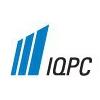European renewable energy targets for 2020 and beyond demand that every aspect of the offshore wind turbine is scrutinised for best performance, reliability and cost-efficiency. The drivetrain, the generator and the gearbox account for 14% of failures per turbine per year, but cause 39% of all downtime for the same period.
The components, particularly in the gearbox, are subject to intense stress due to wind turbulence offshore, and are often the first parts to fail. Downtime at sea is much more pronounced, and improvement in the design of the drivetrain configuration will significantly reduce breakdowns.
The next generation of drivetrains under development include several innovative designs using direct drive systems, or hybrid systems. The trend towards direct drive is most prominent in the offshore market because of the need for greater reliability; but the challenge remains to produce a system which is light enough for the largest offshore turbines, yet cost efficient when compared with a conventional geared drivetrain.
Progression from current to future design
Wind turbines have previously used a gearbox to drive the generator, but it has always been considered a weak link. Extreme stress is placed on a gearbox by wind turbulence, and the need for larger gearboxes to service larger turbines offshore make the gearbox a vulnerable component. The cost of servicing an offshore turbine and the extended downtime has led to advances in direct drive technology, thus eliminating the gearbox and all associated failures.
Direct drive
With the generator rotating at the same speed as the turbine shaft in a direct drive system, designers have compensated by increasing the radius of rotation; using generators with a diameter of several metres. Larger generators would be needed for larger offshore wind turbines, and the problem facing developers is reducing the weight to make direct drive viable. Direct drive technology improves reliability, simplifies the nacelle assembly and helps to increase efficiency, but improvements must be made in cost efficiency and weight reduction.
Hybrid systems
Hybrid systems combine a simple and more reliable gearbox with a direct drive system. The hybrid concept has gearing at megawatt scale, but also has a large diameter generator. The nacelle has a more compact design, with the gearbox and generator giving a balanced geometry to the system. The image of the WinWind 3MW turbine below demonstrates the suitability to offshore applications, as the nacelle does not extend too far from the tower centreline.
Future concepts
Progression towards 10MW and larger turbines requires lighter, more reliable drivetrains; and some of the technology being introduced and currently under trial will be examined in this section. It is not yet clear which type of drivetrain will best serve the wind energy industry long term; direct drive and hybrid systems will soon be joined on the market by new concepts in controlling the variable speed of the turbine.
Interested in learning more about Drivetrain Solutions for Next Generation Wind Turbines? Click here for many more relevant free whitepapers, articles, and podcasts.
The components, particularly in the gearbox, are subject to intense stress due to wind turbulence offshore, and are often the first parts to fail. Downtime at sea is much more pronounced, and improvement in the design of the drivetrain configuration will significantly reduce breakdowns.
The next generation of drivetrains under development include several innovative designs using direct drive systems, or hybrid systems. The trend towards direct drive is most prominent in the offshore market because of the need for greater reliability; but the challenge remains to produce a system which is light enough for the largest offshore turbines, yet cost efficient when compared with a conventional geared drivetrain.
Progression from current to future design
Wind turbines have previously used a gearbox to drive the generator, but it has always been considered a weak link. Extreme stress is placed on a gearbox by wind turbulence, and the need for larger gearboxes to service larger turbines offshore make the gearbox a vulnerable component. The cost of servicing an offshore turbine and the extended downtime has led to advances in direct drive technology, thus eliminating the gearbox and all associated failures.
Direct drive
With the generator rotating at the same speed as the turbine shaft in a direct drive system, designers have compensated by increasing the radius of rotation; using generators with a diameter of several metres. Larger generators would be needed for larger offshore wind turbines, and the problem facing developers is reducing the weight to make direct drive viable. Direct drive technology improves reliability, simplifies the nacelle assembly and helps to increase efficiency, but improvements must be made in cost efficiency and weight reduction.
Hybrid systems
Hybrid systems combine a simple and more reliable gearbox with a direct drive system. The hybrid concept has gearing at megawatt scale, but also has a large diameter generator. The nacelle has a more compact design, with the gearbox and generator giving a balanced geometry to the system. The image of the WinWind 3MW turbine below demonstrates the suitability to offshore applications, as the nacelle does not extend too far from the tower centreline.

Source:WinWind
Future concepts
Progression towards 10MW and larger turbines requires lighter, more reliable drivetrains; and some of the technology being introduced and currently under trial will be examined in this section. It is not yet clear which type of drivetrain will best serve the wind energy industry long term; direct drive and hybrid systems will soon be joined on the market by new concepts in controlling the variable speed of the turbine.
Interested in learning more about Drivetrain Solutions for Next Generation Wind Turbines? Click here for many more relevant free whitepapers, articles, and podcasts.


